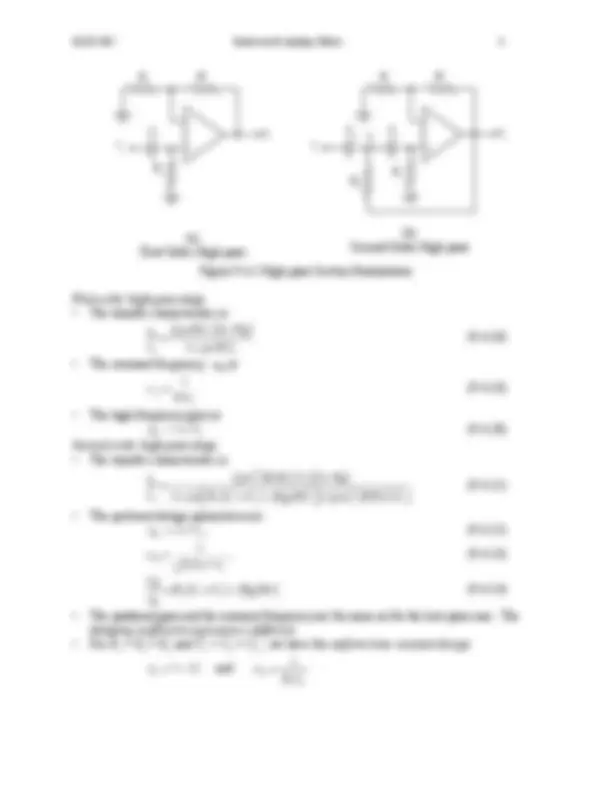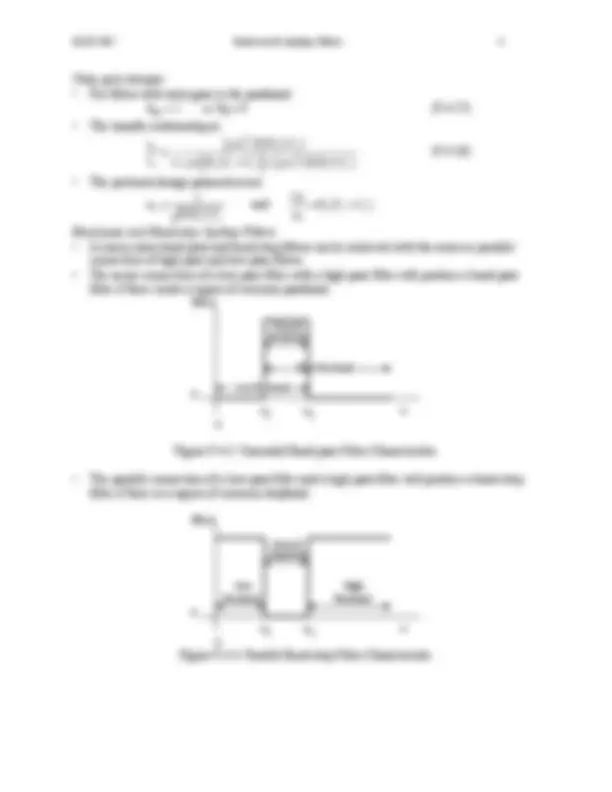




Study with the several resources on Docsity

Earn points by helping other students or get them with a premium plan


Prepare for your exams
Study with the several resources on Docsity

Earn points to download
Earn points by helping other students or get them with a premium plan
Community
Ask the community for help and clear up your study doubts
Discover the best universities in your country according to Docsity users
Free resources
Download our free guides on studying techniques, anxiety management strategies, and thesis advice from Docsity tutors
Active Butterworth filter design Part 5
Typology: Lecture notes
1 / 4

This page cannot be seen from the preview
Don't miss anything!



into account since each stage presents a load to preceding and following stages that can vary
the design parameters of the filter.
stages: each stage does not typically present a gain-changing load to either preceding or
following stages.
VT
Vi
i = 1
N
◊ The resonant frequency, ω o
, must be variable in both first and second order stages.
◊ The damping coefficient, ζ, of second order stages must be variable.
is the 3 dB frequency and ζ is the
damping coefficient (tabulated in Table 9.3-1).
Low-pass OpAmp Filters:
R
R R'
C
1
1
v
v i
o
−
(a)
First Order Low-pass
R R'
R
C
1
1
v
v i
R o
C
2
2
−
v b
(b)
Second Order Low-pass
Figure 9.4-1 Low-pass Section Realizations
First order low-pass stage
is determined by the input RC time constant:
Second order low-pass stage
therefore known as the Sallen and Key circuit.
v o
v i
R ' R
1 + j ω R 1
1
R '
2 R 1
2
1
Vo
R ' R ,^ (9.4-8)
is determined by:
and
2 ζ
ω 0
1
1
2
2
2
C
and C 1
2
C
, we have the uniform time constant design :
and ω o
C
C
Unity gain designs:
Vo
R' R
v o
v i
1 + j ω R 1
1
2 R 1
2
1
and
2 ζ
ω 0
1
1
Design Procedure for OpAmp Butterworth Filters (Uniform Time Constant)
and damping
coefficients, ζ as appropriate.
and C 2
2
, R , and R'.
High-pass OpAmp Filters:
simply by interchanging the position of the numbered capacitors with the numbered resistors.
Interchanging these elements retains the same number of transfer function poles and adds
zero-frequency zeroes.
Unity gain designs:
Vo
R ' R =^0 (9.4-25)
v o
v i
2 R 1
2
1
1 + j ω R 2
1
2 R 1
2
1
ω 0
1
2
1
2
and
2 ζ
ω 0
2
1
Band-pass and Band-stop OpAmp Filters
connection of high-pass and low-pass filters.
filter if there exists a region of common passband.
Passband
0
0
2
ω
|H( )|ω
ω 1
ω
Overall
Low Passband
High Passband
Figure 9.4-3 Cascaded Band-pass Filter Characteristic
filter if there is a region of common stopband.
Stopband
0
0
2
ω
|H( )|ω
ω 1
ω
Overall
Low High
Passband Passband
Figure 9.4-4 Parallel Band-stop Filter Characteristic